Plants are an amazing addition to any home.
They can improve air quality, provide oxygen, and even help to purify water.
However, during your plant-hunting journey, you may come across a plant with some unsightly holes in its leaves.

While it may be tempting to write these plants off as damaged goods, don’t be so quick to judge.
Believe it or not, several plant species develop holes in their leaves as part of their natural growth cycle.
Curious to know which plants fall into this category?
Keep reading to learn about six plants with holes in their leaves.
Why Some Plants Have Holes in Their Leaves
Before we get to the list of plants, it’s important to understand why some plants develop holes in their leaves.
Holes in leaves might seem like they would make the plant more vulnerable to predators, but that’s not always the case.

Many times, these holes help the plant to survive.
How? Well, for starters, holes in leaves can help the plant conserve energy and nutrients.
By capturing light more effectively in unpredictable or shady environments, the holes act as built-in sunglasses, shielding the leaves from the harmful effects of UV light while also allowing the plant to reduce its water intake.
Leaf fenestration is the technical term for this type of leaf structure, and it’s found in plant species across the globe, from the cold tundra to the hot desert.
6 Plants With Holes in Their Leaves
Now that you know a little bit more about why some plants develop holes in their leaves let’s look at 6 of the most popular varieties.
1. Swiss Cheese Plant (Monstera deliciosa)
Monstera deliciosa is a tropical plant native to Mexico and Panama.
It’s characterized by its large, glossy leaves with holes or fenestrations (window-like openings) along the sides.
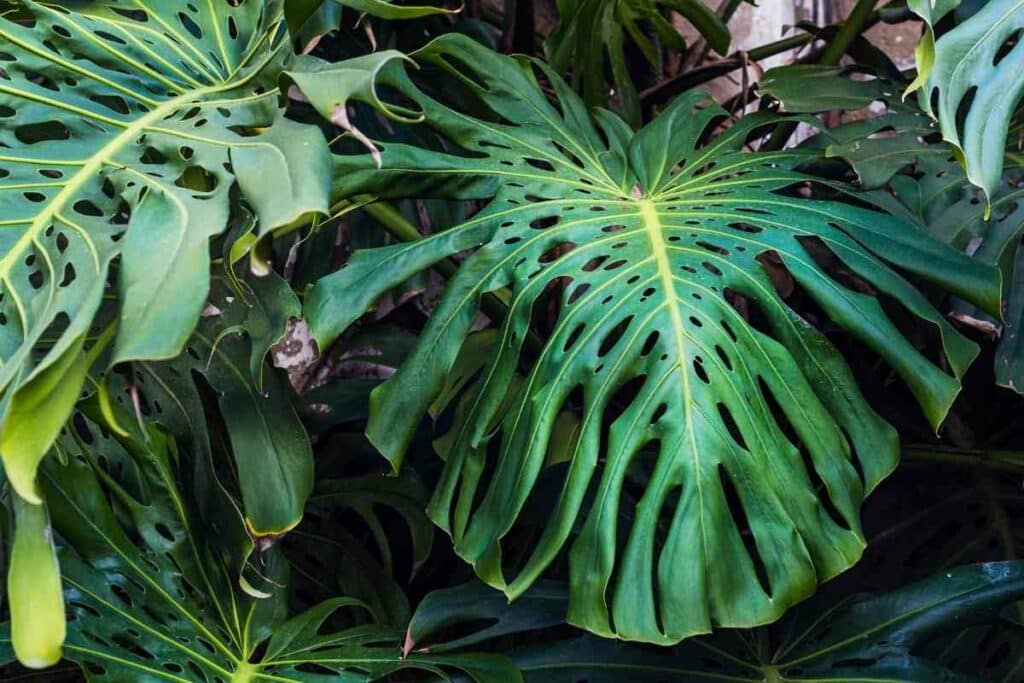
The plant’s resemblance to Swiss cheese is what earned it the nickname. The holes serve an important purpose.
They help the plant to shed water more easily in its tropical rainforest habitat. Theories abound, but the most likely explanation is that they help the plant cope with heavy rains.
Monstera deliciosa is also the most well-known holed-leaf plant, thanks partly to its popularity among interior designers and plant enthusiasts.
2. Cape Pondweed (Aponogetonaceae)
Cape pondweed (Aponogetonaceae) is a genus of flowering plants native to:
- Africa
- Madagascar
- and the Indian Ocean islands
It’s an aquatic plant that’s typically found in ponds and marshes.
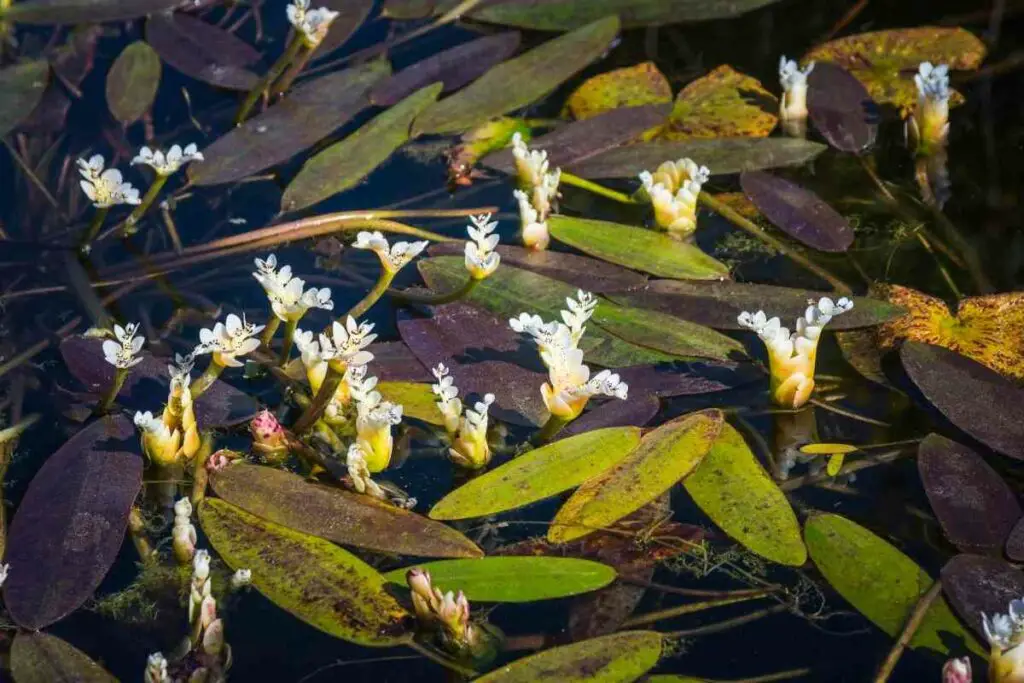
The leaves of the Cape pondweed are long and strap-like, with distinctive fenestrations along the sides.
These holes are thought to help the plant float more easily on the water’s surface and allow it to absorb carbon dioxide more efficiently.
Cape pondweed is a beautiful plant often used in aquascaping (decorating fish tanks).
Even Better – It’s also a popular choice for pond owners because it helps to oxygenate the water and provides shelter for fish and other aquatic creatures.
3. American Pondweed (Potamogeton americanus)
American pondweed (Potamogeton americanus) is an aquatic plant found in North America’s ponds, lakes, and streams.
It’s characterized by its long, thin leaves that have tiny holes or fenestrations along the edges.
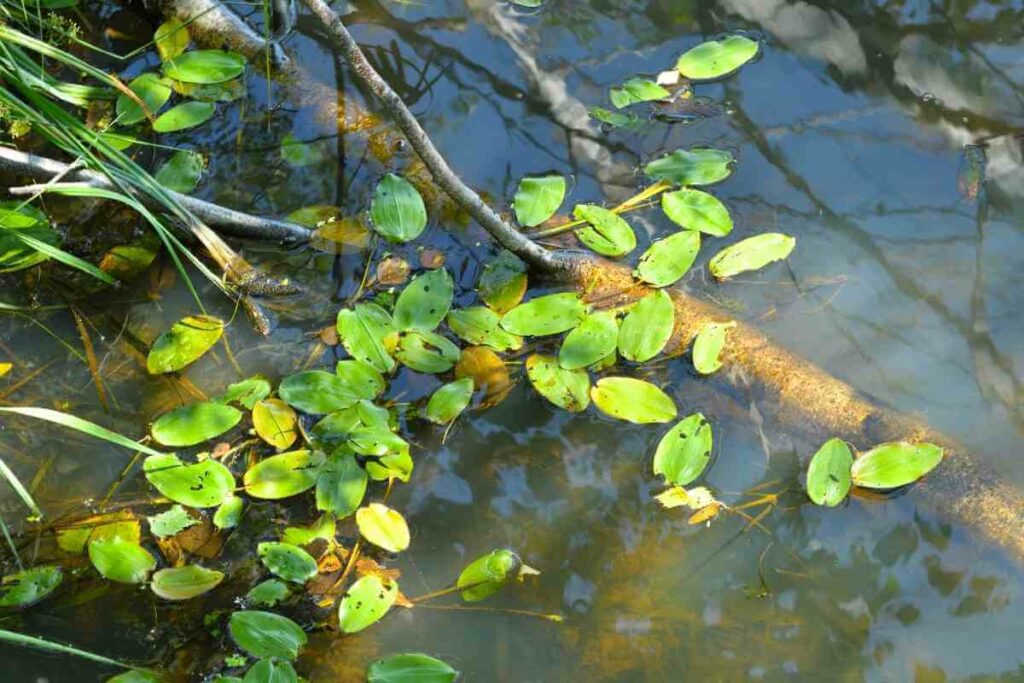
While there’s no proven reason why the leaves of American pondweed have these holes, it’s believed that they help the plant reduce its water intake and prevent heat stress.
The commonality between American pondweed and other hole-leaf plants is that they all grow in hot, humid environments where water conservation is key to survival.
Many pond and aquarium owners choose American pondweed for its aesthetic appeal.
The plant’s leaves often have a red or purple hue, making them a beautiful addition to any pond or water garden.
4. Madagascar Laceleaf (Aponogeton Madagascariensis)
Madagascar laceleaf (Aponogeton madagascariensis) is a flowering plant native to, you guessed it, Madagascar.
It’s characterized by its long, lance-shaped leaves that have delicate holes along the edges.
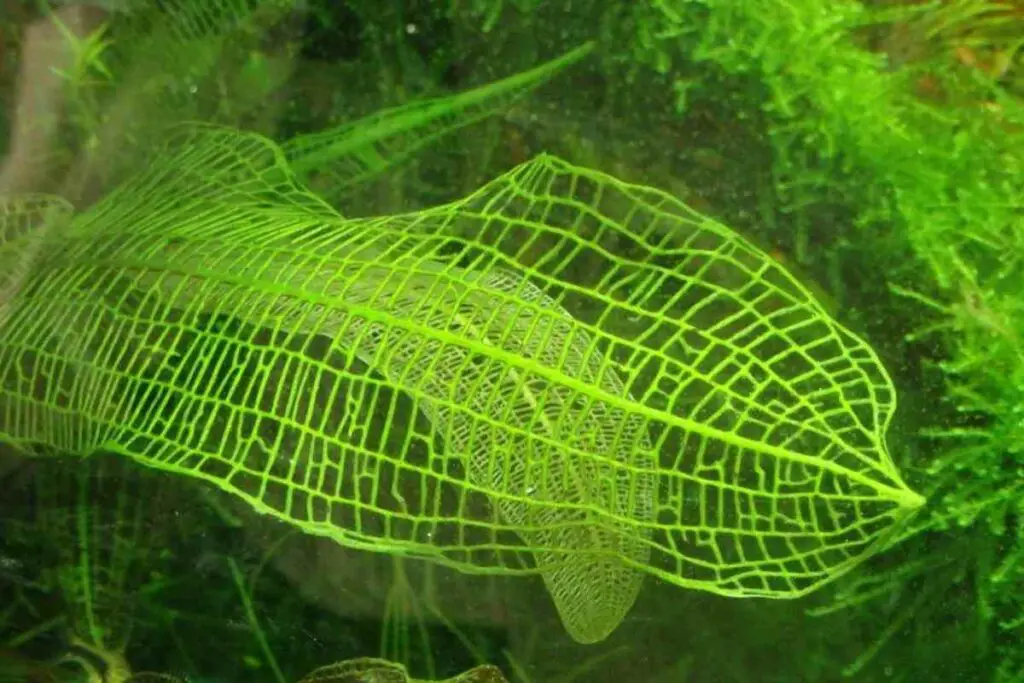
The holes on the leaves of this plant are particularly interesting because they’re not random. Instead, they form a beautiful geometric pattern that’s reminiscent of lace.
While the precise reason for this leaf fenestration is unknown, it’s thought to help the plant cope with the harsh Madagascar climate.
The holes may also help the plant to reduce water loss and capture more sunlight.
5. Pothos (Epipremnum aureum)
Pothos (Epipremnum aureum) is a trailing plant native to Malaysia, Indonesia, and the Solomon Islands.
It’s characterized by its heart-shaped leaves with holes or fenestrations along the sides.
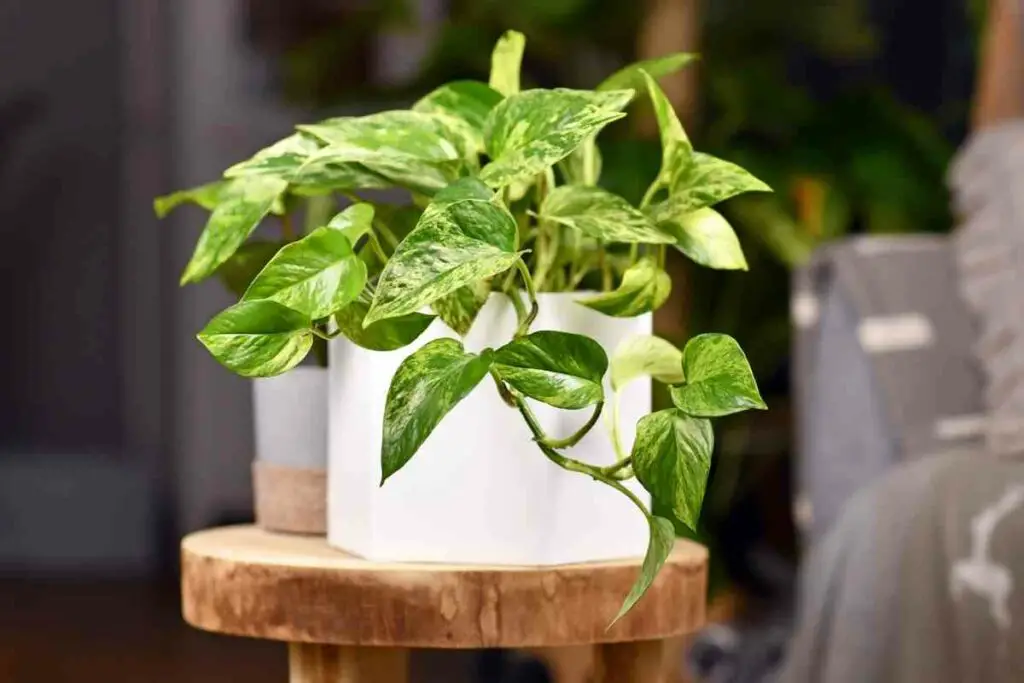
The plant’s holes help it to reduce water loss and prevent the leaves from getting too much sun exposure.
They also help the plant cope with high humidity levels, which is why pothos is such a popular plant for humid environments like bathrooms and kitchens.
Pothos is a popular houseplant because it’s easy to care for and thrives in many environments.
Did You Know? It’s also known for purifying the air, making it an excellent plant for improving indoor air quality.
6. Living Stone (Lithops sp.)
Lithops sp. is a unique plant commonly known as the living stone or pebble plant.
These slow-growing succulents are native to Southern Africa and get their name from their tendency to resemble small rocks or stones.
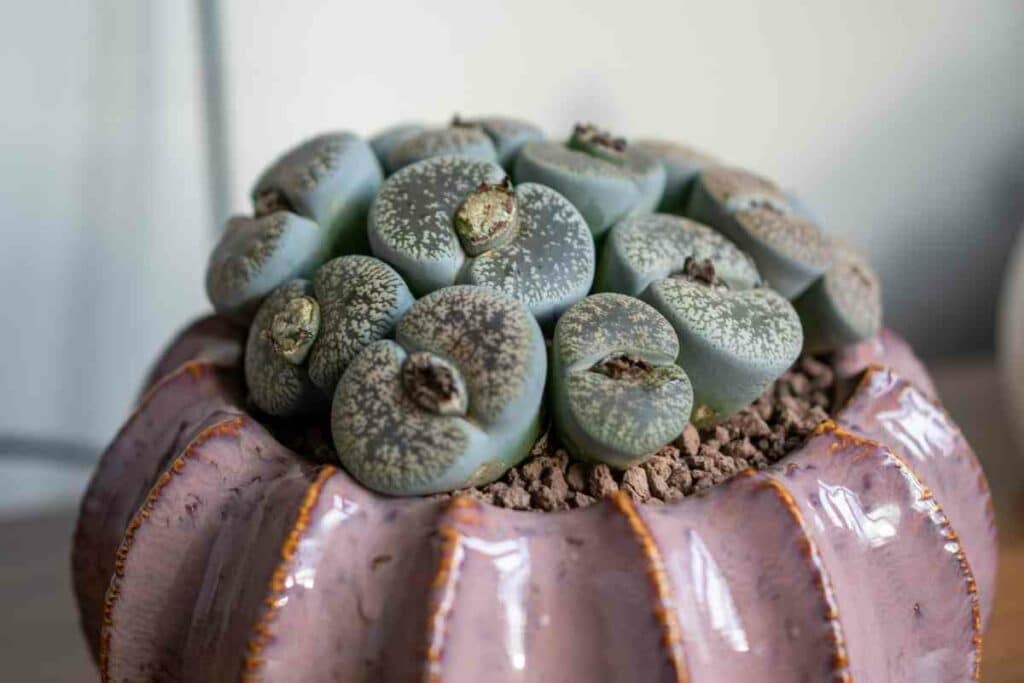
Lithops sp. plants have two leaves that grow close together and fuse at the base, creating the appearance of a single, pebble-like entity.
The plants also have translucent windows or fenestrations on their leaf surfaces, allowing light to reach the photosynthetic tissue beneath.
These windows help the plant to conserve water by reducing evaporation.
They also give the plant a much-needed energy boost by allowing it to capture sunlight more efficiently.
Is It Normal for Plants to Have Holes in Their Leaves?
While holes in leaves are perfectly normal for some plants, they can also be a sign of a problem.
If you notice holes in the leaves of your plants, it’s important to inspect them closely to see if there are any other signs of distress.
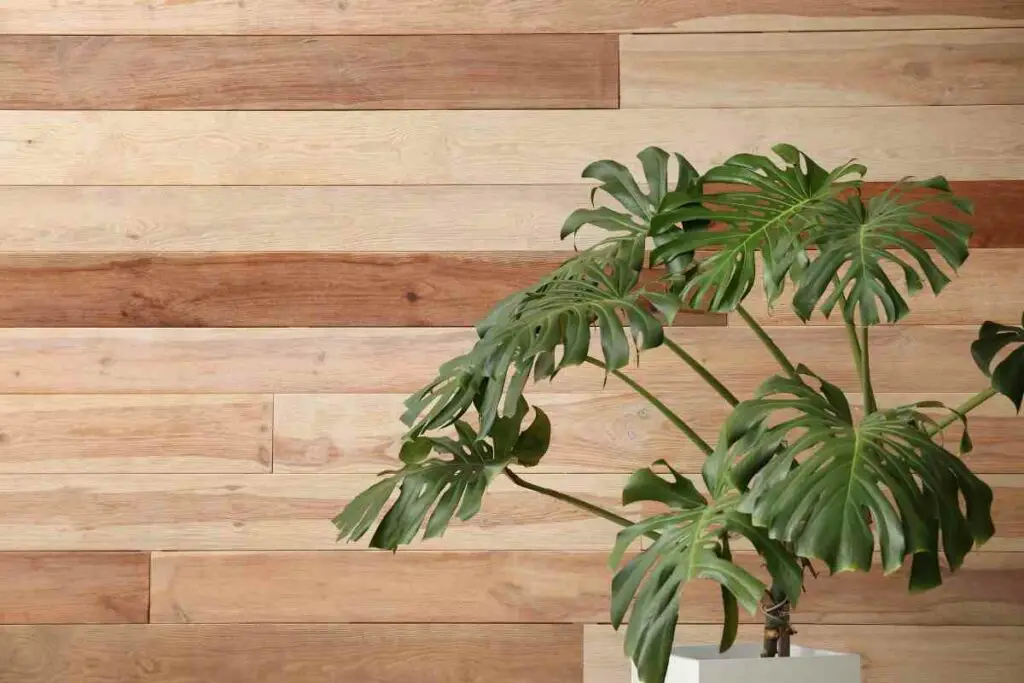
There are several reasons why plants develop holes in their leaves, including:
- Environmental stress: Extreme heat, cold, or drought can cause leaves to develop holes. This is a plant’s way of conserving water and preventing excessive exposure to sunlight. By creating holes, the plant can reduce water intake and prevent the leaves from getting too much sunlight.
- Insect damage: Insects are another common cause of holes in leaves. Caterpillars, for example, love to munch on leaves, and their chewing can often result in holes. Aphids and other sucking insects can also cause leaf damage as they feed on the plant’s sap.
- Disease: Diseases like leaf spots and powdery mildew can also cause holes to form in the leaves. These diseases often result in spots or lesions on the leaf surface, which can eventually lead to hole formation.
While it’s not necessarily harmful to plants to have holes in their leaves, it can signify something is wrong.
If you notice holes in your plants’ leaves, inspect them closely and look for other signs of distress.
Always Good Idea – If you can’t determine the cause of the problem, it’s best to consult a professional.
What To Do When Plant Has Holes in Leaves
If you have a plant that’s not supposed to naturally have holes in its leaves, then it’s likely that something is wrong.
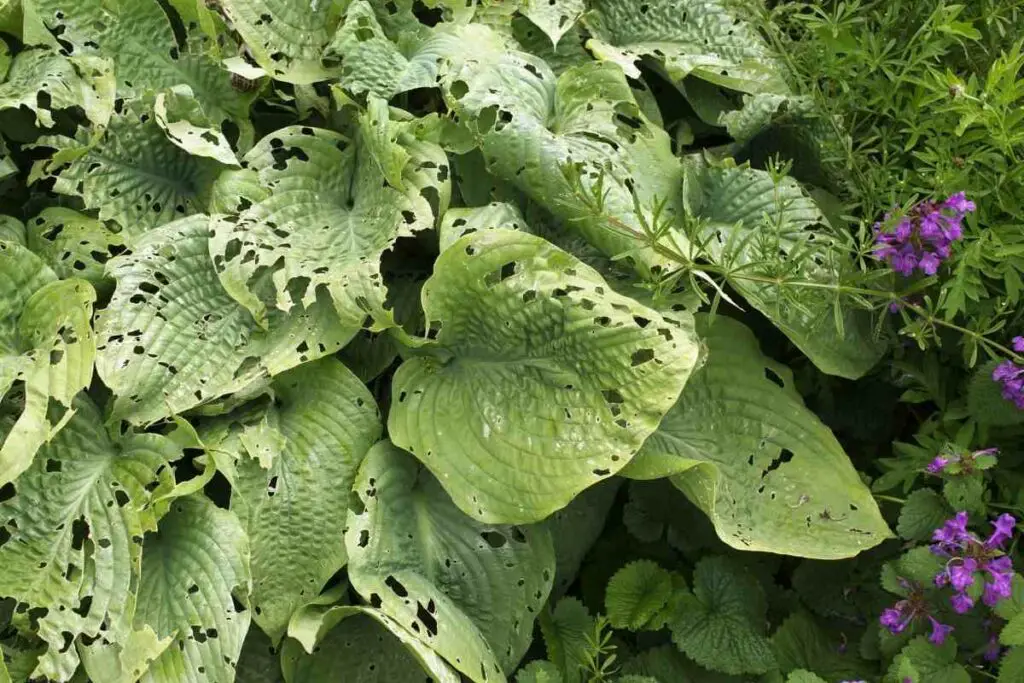
Here’s what you can do if you notice holes in the leaves of your plant.
1. Inspect the Plant Closely
Take a look at the plant.
Are there any other signs of distress? Look for insects, diseases, or environmental stressors that could be causing the problem.
When inspecting the plant, look at the leaves, stems, and roots.
This will help you to get a better idea of what’s going on and whether or not the plant is in danger.
2. Isolate the Plant
If you think that the plant may be sick, it’s important to isolate it from other plants.
This will help to prevent the spread of disease and protect other plants in your collection.
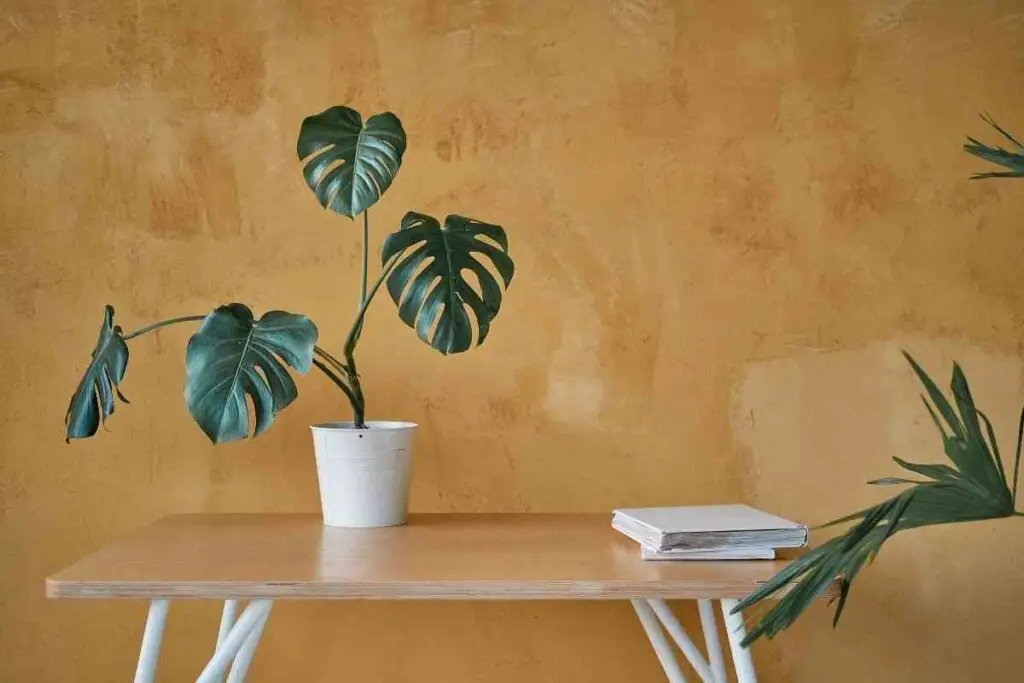
To isolate the plant, simply remove it from its pot and place it in another pot by itself. You can also put the plant in a plastic bag or cover it with plastic wrap.
3. Consult with a Professional
If you can’t determine the cause of the problem, it’s best to consult a professional.
A qualified plant doctor can diagnose the problem and recommend a course of treatment.
Holes in leaves are perfectly normal for some plants but not for others.
Key Takeaway – If you have a plant that’s not supposed to have holes in its leaves, inspect it closely and look for other signs of distress.
Wrapping Up
There you have it, six plants with holes in their leaves.
While the precise reason for leaf fenestration is unknown in some cases, it’s believed to help the plant reduce water loss and capture more sunlight.
Whether you’re looking for a plant to add to your water garden or need a low-maintenance houseplant for your bathroom, one of these plants is sure to fit in.


